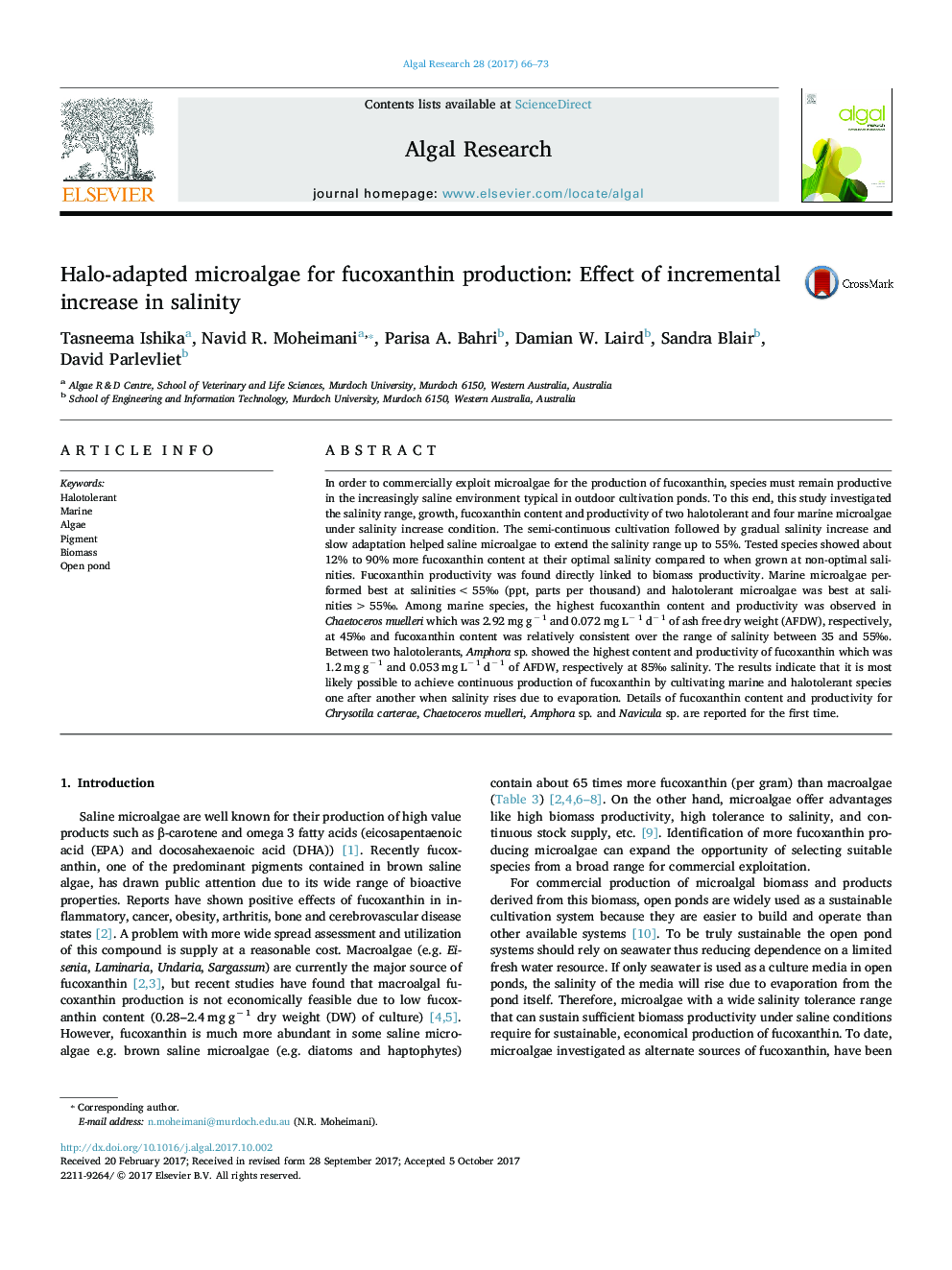| Article ID | Journal | Published Year | Pages | File Type |
|---|---|---|---|---|
| 8086349 | Algal Research | 2017 | 8 Pages |
Abstract
In order to commercially exploit microalgae for the production of fucoxanthin, species must remain productive in the increasingly saline environment typical in outdoor cultivation ponds. To this end, this study investigated the salinity range, growth, fucoxanthin content and productivity of two halotolerant and four marine microalgae under salinity increase condition. The semi-continuous cultivation followed by gradual salinity increase and slow adaptation helped saline microalgae to extend the salinity range up to 55%. Tested species showed about 12% to 90% more fucoxanthin content at their optimal salinity compared to when grown at non-optimal salinities. Fucoxanthin productivity was found directly linked to biomass productivity. Marine microalgae performed best at salinities < 55â° (ppt, parts per thousand) and halotolerant microalgae was best at salinities > 55â°. Among marine species, the highest fucoxanthin content and productivity was observed in Chaetoceros muelleri which was 2.92 mg gâ 1 and 0.072 mg Lâ 1 dâ 1 of ash free dry weight (AFDW), respectively, at 45â° and fucoxanthin content was relatively consistent over the range of salinity between 35 and 55â°. Between two halotolerants, Amphora sp. showed the highest content and productivity of fucoxanthin which was 1.2 mg gâ 1 and 0.053 mg Lâ 1 dâ 1 of AFDW, respectively at 85â° salinity. The results indicate that it is most likely possible to achieve continuous production of fucoxanthin by cultivating marine and halotolerant species one after another when salinity rises due to evaporation. Details of fucoxanthin content and productivity for Chrysotila carterae, Chaetoceros muelleri, Amphora sp. and Navicula sp. are reported for the first time.
Related Topics
Physical Sciences and Engineering
Energy
Renewable Energy, Sustainability and the Environment
Authors
Tasneema Ishika, Navid R. Moheimani, Parisa A. Bahri, Damian W. Laird, Sandra Blair, David Parlevliet,
